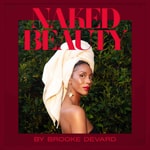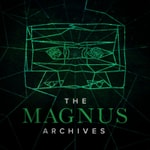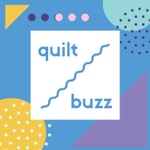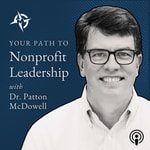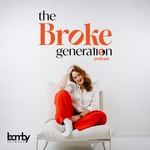The Art Engager – Détails, épisodes et analyse
Détails du podcast
Informations techniques et générales issues du flux RSS du podcast.
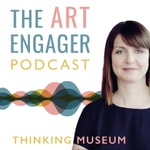
The Art Engager
Claire Bown
Fréquence : 1 épisode/9j. Total Éps: 134

Classements récents
Dernières positions dans les classements Apple Podcasts et Spotify.
Apple Podcasts
🇨🇦 Canada - visualArts
03/09/2024#53🇨🇦 Canada - visualArts
02/09/2024#27🇨🇦 Canada - visualArts
01/09/2024#14
Spotify
Aucun classement récent disponible
Liens partagés entre épisodes et podcasts
Liens présents dans les descriptions d'épisodes et autres podcasts les utilisant également.
See all- https://www.samaritans.org/
1127 partages
- https://www.mind.org.uk/
583 partages
- https://www.buymeacoffee.com/clairebown
70 partages
- https://www.instagram.com/thenapministry
67 partages
- https://www.instagram.com/jess_vanceedu
6 partages
- https://www.instagram.com/carlhonore
5 partages
Qualité et score du flux RSS
Évaluation technique de la qualité et de la structure du flux RSS.
See allScore global : 63%
Historique des publications
Répartition mensuelle des publications d'épisodes au fil des années.
Slow looking and social interaction in museums with Sasha Igdalova
Épisode 132
jeudi 27 juin 2024 • Durée 48:30
Today, I'm talking to Sasha Igdalova about the exciting research she’s been conducting over the past few years around aesthetic experience, slow looking and social interaction in museums.
Aleksandra (Sasha) Igdalova is an interdisciplinary researcher in the final year of her Psychology PhD at Goldsmiths, University of London conducting large-scale, experimental studies on slow looking within exhibition spaces at Manchester Art Gallery.
Her work investigates how popular engagement strategies may be used to increase aesthetic experience and well-being
Listeners to this podcast will know that slow looking has gained in popularity in museums worldwide over the last decade or so. But there hasn’t been much research on its effectiveness, until now.
In today's chat, we explore two studies - the first study to look at the impact of slow looking in an online environment. This study explores how different audio contexts and types of art affect people's moods and engagement levels in online viewing.
The second study is the first large-scale experiment to investigate how social interaction impacts the art museum experience. This study took place in Manchester Art Museum’s fabulous dedicated slow looking space known as Room to Breathe.
We discuss the implications of both studies for educators..and so much more!
This episode is essential listening for anyone interested in slow looking, aesthetic experiences in museums, and the benefits of group interactions for overall well-being in museum environments.
Episode Links:Episode 24 Using art and objects to learn wellbeing skills and improve mental health with Louise Thompson
Aleksandra (Sasha) Igdalova Linkedin: https://www.linkedin.com/in/aleksandra-sasha-igdalova-a66770106/
Website: www.aleksandraigdalova.com
Researchgate profile: https://www.researchgate.net/profile/Aleksandra-Igdalova
Articles on slow looking:
First ever study examining how social interaction impacts art viewing: https://osf.io/preprints/psyarxiv/x9wrt
First ever study looking at slow looking in an experimental manner (online study): https://psycnet.apa.org/record/2023-59333-001
Free access to it here: https://research.gold.ac.uk/id/eprint/33048/9/Igdalova%20&%20Chamberlain%20(2023)%20Slow%20looking%20at%20still%20art.pdf
CREA interdisciplinary workshop: www.crea-workshop.com
The Art Engager Links:The Art Engager: Reimagining Guided Experiences in Museums - sign up for the waitlist to hear when my book will be published!
Sign up for my Curated newsletter - a fortnightly dose of cultural inspiration
Join the
Stimulating the senses: using smell to engage visitors
Épisode 131
jeudi 13 juin 2024 • Durée 43:01
How can we use our sense of smell to engage visitors? My guest today, Sofia Collette Ehrich is an art historian and curator of multisensory experiences. She was a key researcher on Odeuropa - a European funded Horizon 2020 project that advocated for smell as an important part of Europe’s cultural heritage.
We discuss when she first realised her passion for working with scents and how smell can make museum experiences more engaging.
We cover her creation of a scent-based tour for Museum Ulm in Germany and a 'Scratch and Sniff' self-guided tour for the Amsterdam Museum.
We also look at the Olfactory Storytelling Toolkit, 'smell walks,' and the idea of a 'sniffer in residence.' Sofia shares lots of practical tips for adding olfactory elements to your programmes.
If you want to infuse the sense of smell into your practice or incorporate more multisensory approaches into your programmes, you'll learn a lot from this episode.
Episode Links:Sofia Collette Ehrich
https://sofiaehrich.wordpress.com/
https://thesensesationalexplorer.substack.com/
https://www.linkedin.com/in/sofia-collette-ehrich/
https://www.instagram.com/thesensesationalexplorer/
Museum Ulm Links:
https://odeuropa.eu/2022/04/now-open-follow-your-nose-at-museum-ulm/
https://odeuropa.eu/2023/01/update-follow-your-nose/
City Sniffers Links:
https://odeuropa.eu/2022/08/launch-of-city-sniffers-a-smell-tour-of-amsterdams-ecohistory/
Video: https://www.youtube.com/watch?v=c7utP_pAx_E
Odeuropa Impact:
This is an interesting report about the interviews Cecilia Bembibre conducted with museum professionals who have used smells in GLAMs: https://odeuropa.eu/wp-content/uploads/2022/05/D6_1_Guidelines_on_the_Use_of_Smells_in_GLAMs.pdf
Olfactory Storytelling Toolkit:
Download it here: https://zenodo.org/records/10254737
Guidelines for conducting an olfactory guided tour here: https://zenodo.org/records/10102080
Guidelines for conducting a smell walk here: https://zenodo.org/records/10101016
A talk Sofia gave for the Swedish Heritage Commission which included many practical examples:
Arts on prescription and museums: a conversation with Dr Tasha Golden
Épisode 122
jeudi 22 février 2024 • Durée 39:15
In this episode of the Art Engager podcast, host Claire Bown talks with Dr. Tasha Golden about the role arts and culture can play in public health, discussing Tasha's journey from singer-songwriter to public health scientist and the impact of social prescribing on healthcare.
They delve into the ways museums are becoming active participants in community health, sharing examples and practical tips for cultural institutions. The conversation also covers the practical application of the Arts on Prescription field guide and the importance of inclusive access, diversity training, and self-care for educators and creatives in the arts.
(0:00:13) - Dr. Tasha Golden's journey from musician to public health scientist and the success of the CultureRx pilot program.
(0:12:15) - An in-depth look at social prescribing and arts on prescription's potential impact on social isolation.
(0:18:14) - Museums promoting health and well-being through innovative programming and partnerships.
(0:27:42) - The importance of diversity, equity, and inclusion training, trauma-informed practice, and self-care for creatives and educators.
(0:38:11) - Wrap-up and resources.
Links
Arts on Prescription Field Guide https://www.tashagolden.com/fieldguide
https://www.instagram.com/tasha.golden/
https://www.linkedin.com/in/tashagolden/
“How We Human,” Mental Health and Trauma-Informed Practice training — designed specifically for artists and arts organizations: http://www.tashagolden.com/training
Get in touch with the show!
Curated newsletter by Claire Bown
Join the Slow Looking Club Community on Facebook
Download the free guide - how to look at art (slowly)
Download the Ultimate Thinking Routine List
6 Ways to Create Awe-Inspiring Experiences with Art and Objects
Épisode 32
jeudi 9 décembre 2021 • Durée 24:35
Awe is an emotion that can be triggered by being around something larger than yourself, that’s not immediately understandable.
It's that feeling you get when you look up and see millions of stars in the night sky; witness a beautiful landscape or set eyes on an artwork for the first time.
Museums and galleries, historic settings and buildings can all provoke awe. And you can foster more of it in your programmes by thinking carefully about the artworks, objects you include, the questions you ask and the information you share.
How about you try to sprinkle some awe-moments throughout your next guided tour or educational programme?
So today, I’m talking about what awe is, why it’s important and sharing 6 ways you can create awe-inspiring experiences with art and objects.
At the end I’ll be sharing 3 things to look for to check you’ve succeeded in inspiring awe in your audience.
LINKS
Dacher Keltner quote taken from Psyche - How to Fill your Life with More Awe Every Day
Dacher Keltner & Jonathan Haidt Approaching Awe: A Moral, Spiritual and Aesthetic Emotion
Dacher Keltner's 8 Wonders of Modern Life
How to Teach with Objects with Jo-Anne Sunderland Bowe
Épisode 31
jeudi 2 décembre 2021 • Durée 28:33
This week on the podcast: I’m delighted to be talking to Jo-Anne Sunderland Bowe and we're talking about how to teach with objects.
Jo-Anne is director of Heritec Limited, a UK-based heritage education consultancy which works on European collaborative projects. Jo-Anne has a keen interest in object-based learning and creative and critical thinking.
in today’s chat we talk about the values that drive her work and her passion for object-based learning and teaching.
We talk about what object-based learning means and dive into the processes around it - collective thinking, collaborative action, inquiry dialogue and the acts of wondering. Jo-Anne discusses the many benefits of working with objects and shares her tips for how you can better engage your audience with objects.
I hope our chat inspires you to think about how you might use objects of any kind to engage your audiences.
LINKS
Masterclass - How to use slow listening to engage the senses and make connections with objects
Flinders University Objects in Teaching and Learning wheel
Art and Dementia with Catherine Chastney
Épisode 30
jeudi 25 novembre 2021 • Durée 28:32
For our thirtieth episode, I’m delighted to be talking to Catherine Chastney.
Catherine is an art educator and owner of social enterprise I Picture This. Catherine’s work focuses on bringing art and the joy of discussing art to older people, from creating conversations in care homes, to creating art cards during lockdown and working with people living with dementia.
In this chat we explore the strong values that guide Catherine's work - she is passionate about that anyone can look at and discuss art, she loves using art to bring people together and to improve wellbeing
We talk to about the toolkit she has just published with the Wallace Collection for Looking at Art designed for anyone working or volunteering in care settings and, of course, her work with people living with dementia.
Catherine shares some wonderful tips for discussing art with people with dementia - from creating trust seeking permission, active listening and creating space.
This conversation will inspire you to think about how you might use art to bring people together, create conversations, forge connections and ultimately improve wellbeing.
LINKS
Masterclass - A dementia-friendly approach to art
How to develop a reflective practice
Épisode 29
jeudi 18 novembre 2021 • Durée 26:44
So in today’s episode I’m talking about how to develop a reflective practice in your work.
A reflective practice is simply the art of thinking about or reflecting on what you do. It is a way of recognising, capturing and articulating what we’re learning on a moment by moment basis.
By following any of the suggestions in this episode, you will develop a questioning approach to your work. You will stop and pause to think about why things are as they are and how they might be in the future. You will consider the strengths and areas of development in your own practice and consider how to develop your skills.
First I'll share more about what reflective practice is and the benefits of introducing reflection as a practice into your work.
Then I'm going to share 7 different ways you can use to develop your reflective practice and 3 tips to get you started.
Links
Episode 6 - 6 thinking routines you should have in your repertoire - including ESP+I
How to Engage your Audience with Colour in Art Discussions
Épisode 28
jeudi 11 novembre 2021 • Durée 16:09
Today I’m focusing on colour.
Colour is one of the 7 elements of art along with shape, line, form, texture, value and space. It's a vast subject - but today I don't want to focus on colour theory or the science of colour.
Instead, I want to get you thinking about how you approach colour with your audience during an art discussion.
I’m going to look at different ways you can create discussion about colour with your groups to get them engaged in artworks.
Colour is important because it can make you feel something, even if the artwork itself doesn’t at first glance. Colour is the hook to get audiences curious about artworks and wanting to know more.
So, listen in for some different ways that you can engage your audience - any audience - in discussion about colour.
Links
Slow Looking and Empathy
Épisode 27
jeudi 4 novembre 2021 • Durée 25:41
Today I’m delighted to be talking to Kenia Santos - an educator based in Brazil with specialisations and interests in art history, philosophical inquiry, social and emotional learning, thinking routines and slow looking.
We discuss how she uses thinking routines in her work to encourage and develop slow looking, how she keeps her teenage students engaged for 3 hours in her art classes and how we can develop empathy through slow looking.
Kenia is a passionate educator, slow looking enthusiast and a self-described art history nerd; a cat lover, free spirit and a friendly soul. I hope you enjoy our conversation as much as I did!
Links
Masterclass - How to Develop Empathy through Slow Looking
10 Easy Ways to Make your Guided Tours More Interactive
Épisode 26
jeudi 28 octobre 2021 • Durée 24:39
The traditional lecture-style guided tour is dead, long live the interactive tour!
Well, it’s not actually, it’s still alive and kicking in some quarters, but in my opinion it shouldn’t be the way we think about guided tours in the 21st Century.
Traditional lecture-style ‘walk and talk ‘ guided tours with an expert guide are still fairly common and in some places are still a standard way of ‘presenting’ an historic site, a city or a museum to the public.
Things have definitely changed in the last 10 years since I started this journey of teaching others how to transition to a more discussion-based approach, but there is still work to be done.
If you feel you talk too much on your tours or you overshare information, this podcast episode is for you. If you would like to have more interaction with your participants then today I’m sharing 10 easy ways you can implement NOW to make your tours more interactive - that means more of a two-way conversation rather than a one-way lecture.
So, here are 10 easy ways to make your guided tours more interactive.
Links
Episode 4 The 5 Golden Rules for Asking Brilliant Questions
Episode 10 10 Common Mistakes to Avoid When Asking Questions
Episode 15 How to Use Artworks to Improve your Questioning Skills
The TM WEEKLY Newsletter - every Friday in your Inbox!
